Volume 15, Issue 1
Displaying 1-15 of 15 articles from this issue
- |<
- <
- 1
- >
- >|
Cover
-
Article type: Cover
2006Volume 15Issue 1 Pages Cover1-
Published: May 30, 2006
Released on J-STAGE: March 01, 2018
Download PDF (3181K)
Contents
-
Article type: Cover
2006Volume 15Issue 1 Pages Cover2-
Published: May 30, 2006
Released on J-STAGE: March 01, 2018
Download PDF (3181K)
Preface
-
Article type: Article
2006Volume 15Issue 1 Pages 1-2
Published: May 30, 2006
Released on J-STAGE: March 01, 2018
Download PDF (217K)
Review Article
-
The Suggestion for Recovery of Humanity : from the point of view on the traditional Chinese medicineArticle type: Article
2006Volume 15Issue 1 Pages 3-8
Published: May 30, 2006
Released on J-STAGE: March 01, 2018
Download PDF (716K)
Original Research Paper
-
Article type: Article
2006Volume 15Issue 1 Pages 9-19
Published: May 30, 2006
Released on J-STAGE: March 01, 2018
Download PDF (1176K)
Minor Article
-
Article type: Article
2006Volume 15Issue 1 Pages 21-27
Published: May 30, 2006
Released on J-STAGE: March 01, 2018
Download PDF (795K)
Action Report
-
Article type: Article
2006Volume 15Issue 1 Pages 29-37
Published: May 30, 2006
Released on J-STAGE: March 01, 2018
Download PDF (894K)
Commentary
-
Article type: Article
2006Volume 15Issue 1 Pages 39-43
Published: May 30, 2006
Released on J-STAGE: March 01, 2018
Download PDF (593K)
Report of 15th Annual Convention
-
Article type: Article
2006Volume 15Issue 1 Pages 45-46
Published: May 30, 2006
Released on J-STAGE: March 01, 2018
Download PDF (434K)
Information of the Society
-
Article type: Appendix
2006Volume 15Issue 1 Pages 47-55
Published: May 30, 2006
Released on J-STAGE: March 01, 2018
Download PDF (573K)
Editor's Note
-
Article type: Appendix
2006Volume 15Issue 1 Pages App1-
Published: May 30, 2006
Released on J-STAGE: March 01, 2018
Download PDF (46K) -
Article type: Appendix
2006Volume 15Issue 1 Pages App2-
Published: May 30, 2006
Released on J-STAGE: March 01, 2018
Download PDF (46K)
Copyright
-
Article type: Appendix
2006Volume 15Issue 1 Pages App3-
Published: May 30, 2006
Released on J-STAGE: March 01, 2018
Download PDF (46K)
Back cover
-
Article type: Cover
2006Volume 15Issue 1 Pages Cover3-
Published: May 30, 2006
Released on J-STAGE: March 01, 2018
Download PDF (106K) -
Article type: Cover
2006Volume 15Issue 1 Pages Cover4-
Published: May 30, 2006
Released on J-STAGE: March 01, 2018
Download PDF (106K)
- |<
- <
- 1
- >
- >|
